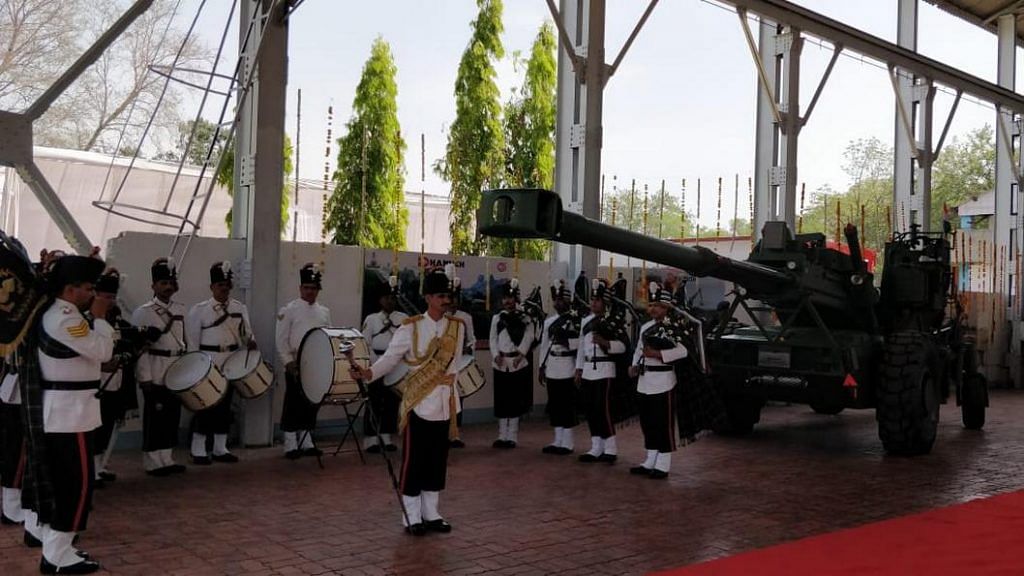New Delhi: The Indian Army has inducted the first six of the indigenously built long-range artillery gun, Dhanush, also known as the ‘Desi Bofors’, which will now add to its firepower along the borders with Pakistan and China.
The six are the first of the 114 Dhanush guns, the first long-range artillery to be produced in the country, that the Army has ordered from the Ordnance Factory Board. The induction happened at the Gun Carriage Factory (GCF) in Jabalpur, which is manufacturing the 155mm x 45mm artillery guns.
The Dhanush, along with recently inducted guns such as the K9 Vajra and the M777 light-weight howitzers, are weapons that the Army had been waiting for decades.
A towed howitzer with a strike range of 38 km, Dhanush has been developed by OFB, Kolkata, on the basis of the first phase of Transfer of Technology (ToT) as part of the Bofors gun deal. The Swedish Bofors company (now owned by Britain’s BAE System) could not complete the ToT as the deal got embroiled in a major political row over alleged kickbacks under the then Rajiv Gandhi government.
Also read: Defence ministry approves indigenous construction of 6 submarines
To beef up Army capabilities
Dhanush is equipped with an inertial navigation-based sighting system, auto-laying facility, onboard ballistic computation and an advanced day and night direct firing system.
The self-propulsion unit allows the gun to be easily deployed in mountainous terrain, a statement by the Defence Ministry had said earlier.
Dhanush has been mechanically upgraded to fire standard NATO 155 mm ammunition and can accommodate the bi-modular charge system (BMCS) that has increased its range.
In June last year, Dhanush passed its final test at Pokhran that paved the way for its induction. The gun has passed tests under severe cold conditions in Sikkim and Leh and in hot and humid weather in Balasore, Odisha, Babina in Jhansi before the tests in Pokhran.
The Army is hoping to induct one complete Dhanush regiment, with 18 guns, by the end of this year.
Also read: India pulls off big feat as indigenous combat helicopter decimates target in air
Gun is over 80% indigenous: GCF
The GCF got the Dhanush project in October 2011 and the first prototype was built in 2014. Later, 11 more prototypes were made from which 4,200 rounds were fired.
The GCF claims that 81 per cent of its components are indigenously sourced and this would be scaled up to 90 per cent by 2019.
Each of the 155-mm gun, which have a hitting range of 11 km more than the Bofors, costs about Rs 14.50 crore.
